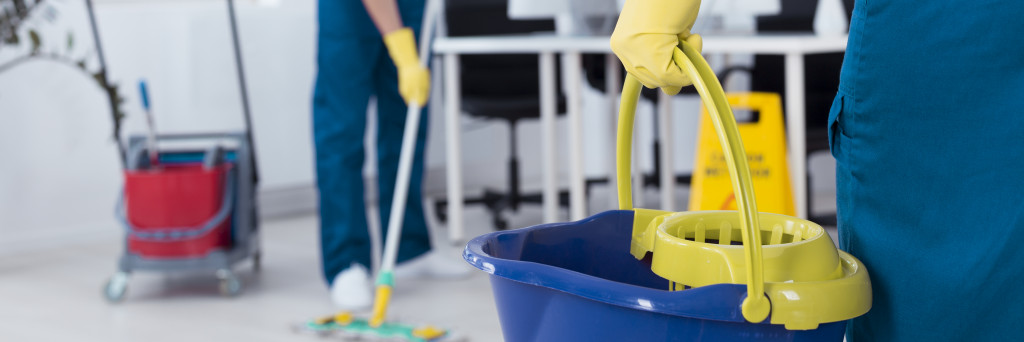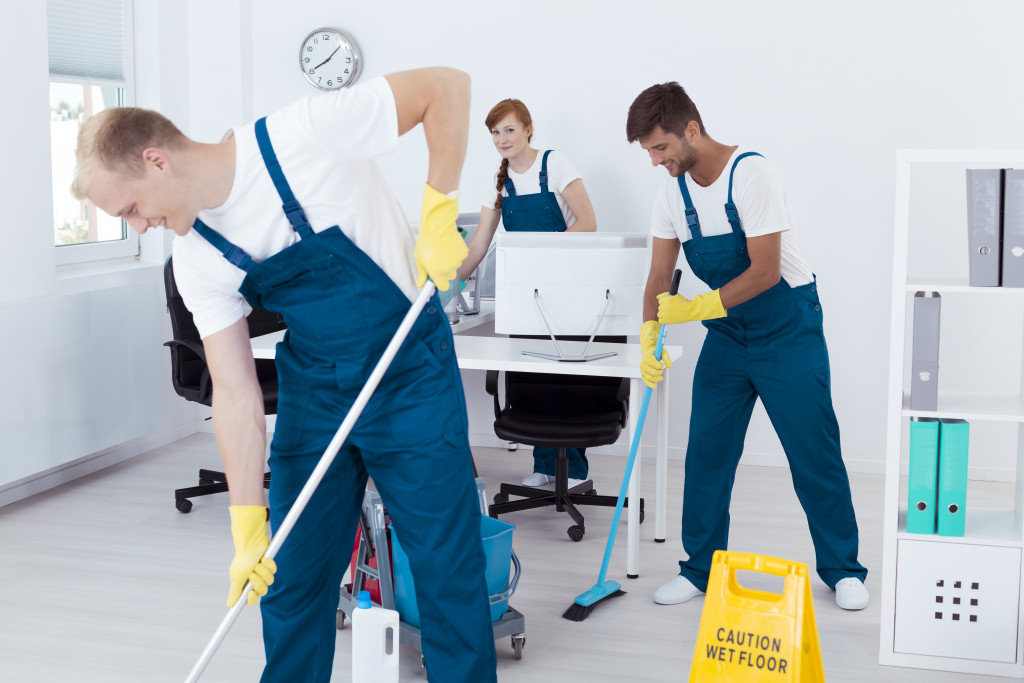- Regular cleaning protocols, using safe products and proper methods, ensure workplace hygiene and employee wellbeing.
- Prioritizing water cleanliness and using scale reduction systems provide clean and safe water.
- Adequate ventilation, both natural and mechanical, reduces airborne disease transmission and improves air quality.
- Continuous maintenance of hygiene measures is crucial for maintaining a safe and efficient workspace.
As a businesswoman, designing a safe and hygienic workspace is important for the health and well-being of your employees. This is especially important in these current times, where the spread of germs and diseases is a major concern. This article will discuss some key factors to consider when designing a safe and hygienic workplace for women.
Have a Cleaning Protocol
Ensure that your building has a cleaning protocol in place. This would ensure regular cleaning and disinfecting of all surfaces, including doorknobs, light switches, water dispensers, and restrooms, among others. You should also have a designated staff to carry out this cleaning protocol. Here are some factors to take into account:
Frequency of Cleaning
The frequency of cleaning greatly impacts the hygiene of the workspace. High-touch areas like door handles, elevator buttons, and kitchen surfaces should ideally be cleaned multiple times a day. Meanwhile, less frequented areas might need cleaning once every day or every other day. The frequency could be adjusted based on the nature of work, the number of employees, and the current health advisory on pandemic safety measures.
Type of Cleaning Products Used
Choosing the appropriate cleaning products is crucial in maintaining a hygienic workspace. Consider using EPA-registered disinfectants that are effective against a broad range of bacteria and viruses. Additionally, opt for cleaning products that are, as far as possible, free from harsh chemicals, thus providing a safer environment for your employees. Always make sure the cleaning staff is properly trained on how to use these products to ensure both effectiveness and safety.
Method of Cleaning

Just as crucial as the frequency and type of cleaning products used is the method of cleaning itself. The cleaning staff should be trained in the best practices for cleaning and disinfecting surfaces. For instance, surfaces should be cleaned in a specific order, starting from the least dirty to the most dirty, to prevent cross-contamination. Furthermore, they should be taught the importance of proper hand hygiene before and after cleaning.
Prioritize Water Cleanliness
Ensuring the cleanliness of water is paramount in maintaining a hygienic workspace. This includes both drinking water and the water used in restrooms and cleaning procedures.
An efficient scale reduction system is a key factor in achieving this. This system helps to mitigate the negative effects of hard water by reducing the buildup of scale in pipes and appliances, thereby ensuring that the water used throughout the building is both clean and safe.
If possible, consider providing filtered drinking water for your employees. This not only promotes better health but also reduces the usage of disposable plastic bottles, making it an environmentally-friendly choice.
Adequate Ventilation
Proper ventilation is another important aspect to consider when designing a safe and hygienic workspace. Good air circulation helps to reduce the risk of airborne transmission of viruses and bacteria. Here are some ways to ensure adequate ventilation:
Natural Ventilation
Natural ventilation can be an effective and energy-efficient way to improve indoor air quality. This refers to the process of supplying and removing air through windows, doors, vents, and other openings. By allowing outdoor air to circulate in the workspace, you can dilute airborne contaminants and lower the risk of disease transmission.
Mechanical Ventilation
Mechanical ventilation systems, such as HVAC systems, can also be used to maintain good air quality in your workspace. These systems work by circulating fresh air into the building while expelling stale air. However, it’s essential to regularly maintain and clean these systems to ensure their effectiveness and prevent the spread of contaminants. Look into incorporating HEPA filters, which can remove a large percentage of airborne particles, to increase the system’s efficiency.
Regular Maintenance
Just as important as implementing these workplace hygiene measures is ensuring their regular maintenance. A lapse in maintenance can quickly erode the benefits of even the most comprehensive safety protocols. This includes regular servicing of ventilation systems, routine checks of water cleanliness, and consistent adherence to cleaning protocols.
Designing a safe and hygienic building for your employees takes effort and planning. However, the benefits definitely outweigh the cost of time and resources expended. By following the tips outlined above, you will have a work environment that is healthy, safe, and conducive to productivity. Remember, a healthy workforce is a happy workforce. So, go ahead and start implementing these tips today.
